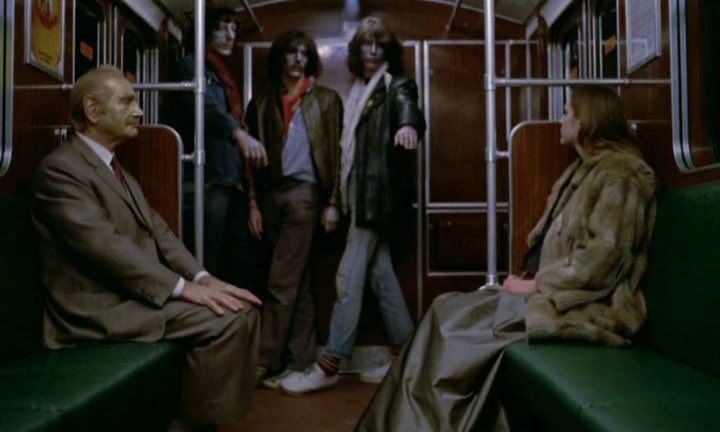
Critics often talk about films as being “harrowing” or “transcendent” as if these traits were something that serious cinema should aspire to. All the while these same “harrowing” and “transcendent” movies are no more sophisticated in their emotive powers than the most simplistic, two-dimensional drama. Then, there are films that truly are “harrowing” experiences, like R.W. Fassbinder’s In A Year With 13 Moons (1978). There are works of true “transcendence” as well; Bill Viola’s The Passing (1991) is more poetry than anything else I’ve ever seen in cinema. But few films are truly both. Few films can gut an audience emotionally while at the same time filling our collective mind with images of the fantastique that radiate wonder and horror in equal measure. These poetic renderings of trauma on celluloid and video are so rare, so precious in every way, that they literally need to be seen. Helma Sanders-Brahms’ aptly titled No Mercy, No Future (1981) is one of these incredible cinematic works.
There are comparisons to be made between Sanders-Brahms’ film and Sara Driver’s You Are Not I (1981). Aside from the obvious, that both films are authored by women and that both films were released in the same year, each film takes a distinctly fantastic approach toward representing mental illness cinematographically. Driver gives us close-ups of her protagonist so that her internal life is but a short distance from the audience while Sanders-Brahms explodes the subconsciousness of Veronika (Elisabeth Stepanek) into a series of highly theatrical and post-modern set pieces that owe as much to Shock Corridor (1963) as they do to Our Hitler (1977).
The fact that Sanders-Brahms walks that thin line between the fantastic and the realistic is what sets No Mercy, No Future in a realm beyond Driver’s film; Driver isn’t as adventurous in mixing aesthetics. All of the soul crushing visual details of poverty, isolation, and dysfunctional social interactions in No Mercy, No Future are all counterpointed by sequences of fantasy that feel ripped from Perceval le Gallois (1978). One half of the film evokes very familiar and visceral traumas whilst the other summons up nightmares and demons from the subconscious. No Mercy, No Future is Sanders-Brahms’ expression of female oppression; a darker, and more outraged cry than even Germany, Pale Mother (1980).
It’s a great miscarriage of cinema studies and culture that Sanders-Brahms isn’t as well regarded as her male counterparts Werner Herzog and Wim Wenders. I purchased the seven film collection of her work from Facets in 2014 without knowing anymore about her than that she was one of the few female filmmakers discussed in John Sandford’s The New German Cinema. We can change that, and we should.
